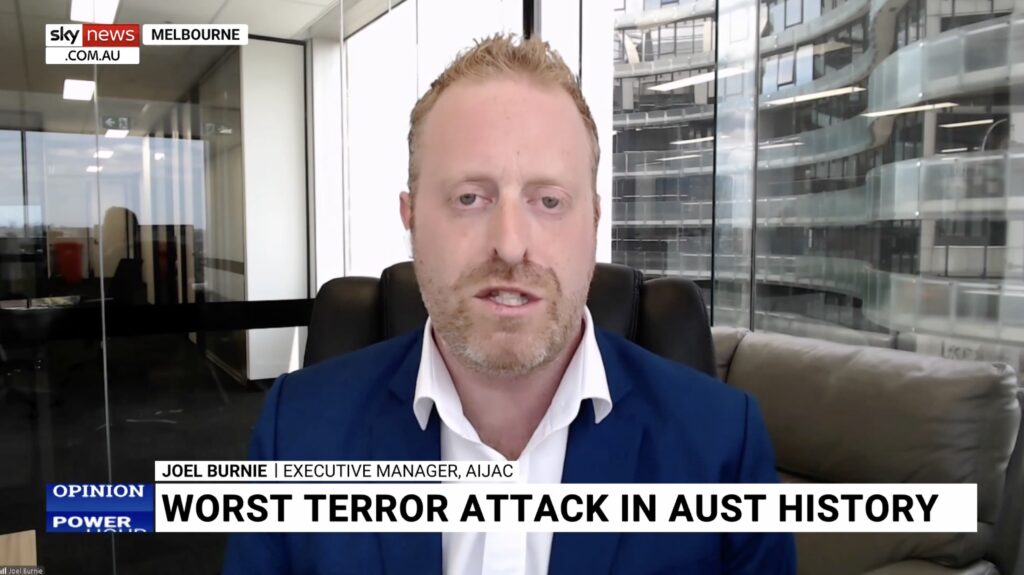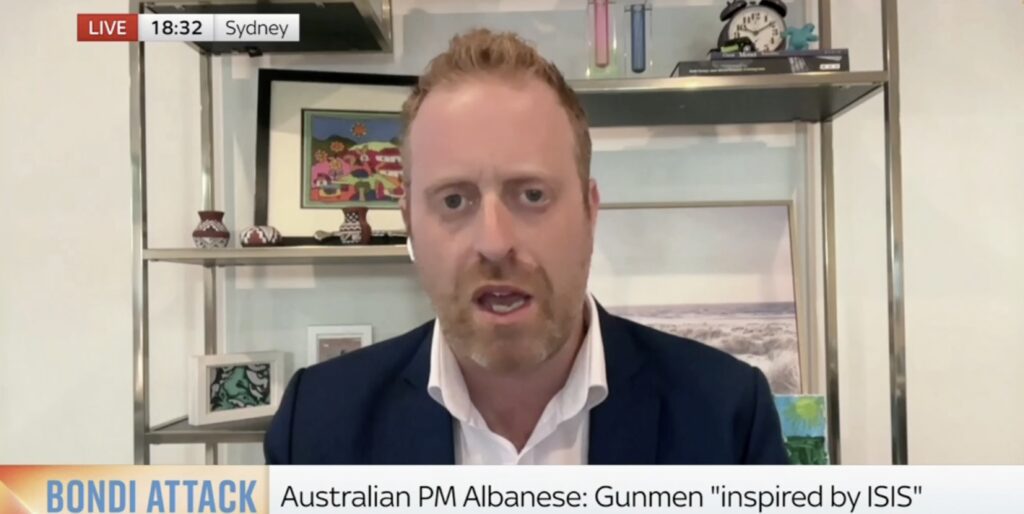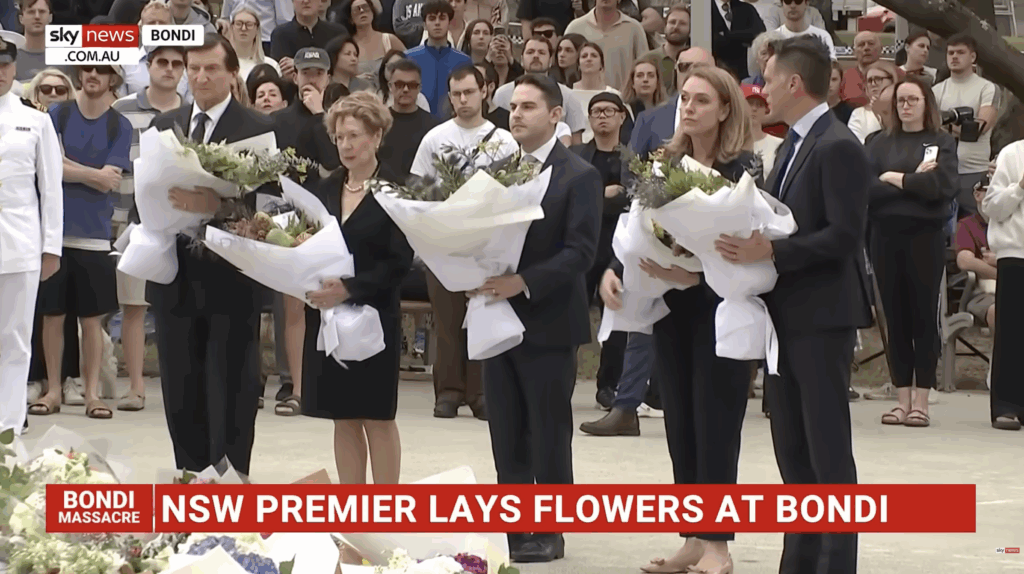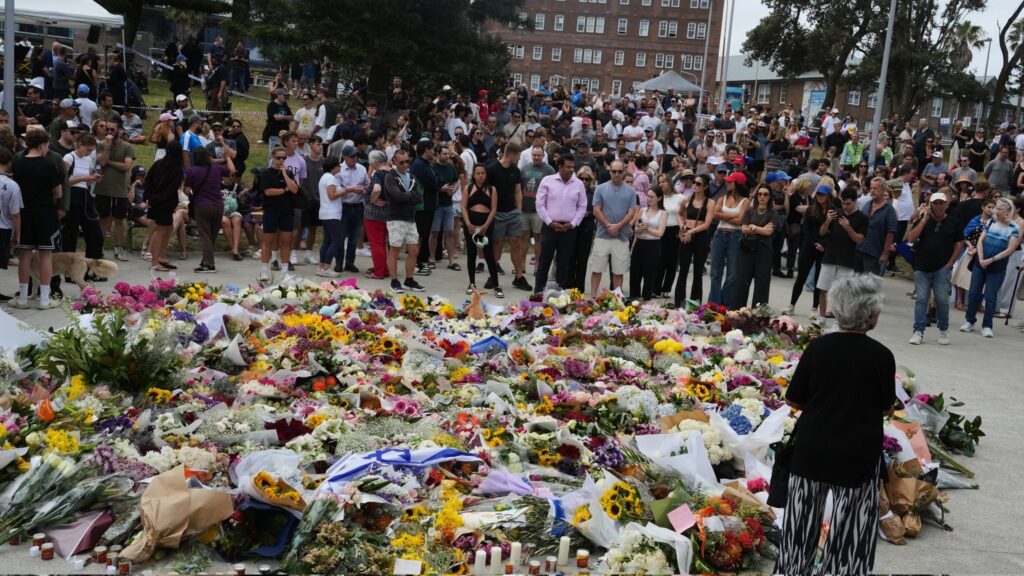UPDATES
Israel’s “Operation Northern Shield” against Hezbollah’s cross-border tunnels
December 7, 2018 | AIJAC staff
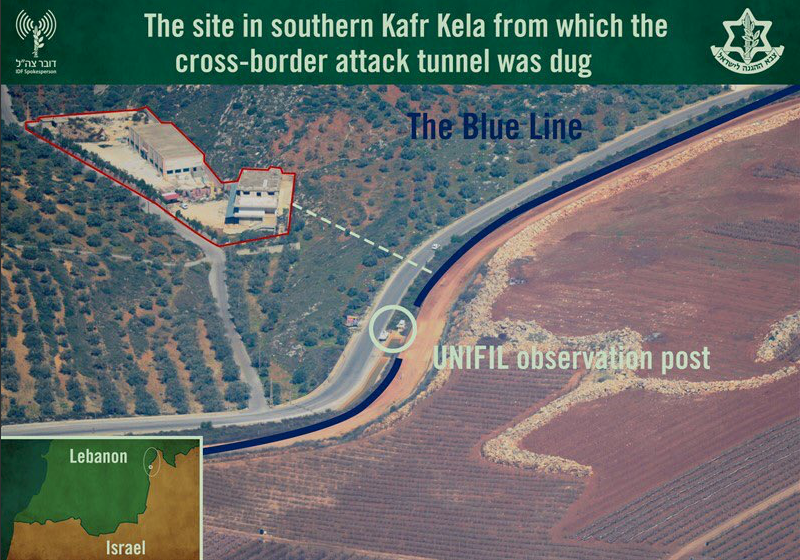
Update from AIJAC
Update 12/18 #01
This Update focuses on Israel’s Operation “Northern Shield”, announced on Tuesday, which is designed to find tunnels dug by Hezbollah into Israeli territory from Lebanon. AIJAC has already published a “fast facts” sheet summarising all the key details, which we strongly recommend our readers have a look at. This Update will supplement the known facts in that post with some strategic analysis.
We lead with Judah Ari Gross of the Times of Israel discussing the cat and mouse game the IDF and Hezbollah are playing as the current Israeli operation, expected to last several weeks, progresses. Hezbollah is making a point of insisting they are tracking all IDF activity from the Lebanese side of the border, but the IDF is trying to surprise the Hezbollah observers with their detailed knowledge of the tunnel network. Meanwhile, the story reports that the IDF says Hezbollah’s intention was to cut off and conquer the northern panhandle area of Israel. For this useful look at the implications of current events along the Israel-Lebanon border, CLICK HERE.
Next up is a good look at Hezbollah’s likely calculation in building the secret tunnels from Haaretz’s security correspondent Amos Harel. He notes that Hezbollah leader Hassan Nasrallah hoped to turn an invasion of northern Israel through the tunnels, even if short-lived, into a massive psychological victory, both within the Arab world and in Israeli minds, during any future conflict. Harel also details how Israel came to learn of the tunnels and came to the decision to launch the current operation. For this essential analysis for understanding the calculations of both Israel and Hezbollah in the current situation, CLICK HERE. More good strategic analysis from another prominent Israeli security reporter, Ron Ben Yishai.
Finally, Israeli columnist Oded Granot comments on Hezbollah’s quiet reaction to Israel’s operation, including not even bothering to deny the Israeli allegations about the tunnels. Granot argues this suggests the tunnels were a trump card Hezbollah believed were completely secret, and their discovery has therefore dealt a major psychological blow to the group. He also suggestions the discovery has given Israel the upper hand in diplomatic efforts to counter the threat from Hezbollah-controlled Lebanon. For the rest of what he has to say, CLICK HERE.
Readers may also be interested in…
- Another good overall backgrounder on events along the Lebanon border comes from the Meir Amit Intelligence and Terrorism Information Centre. Meanwhile, the latest news is Israel has now confirmed finding a second tunnel from Lebanon and are asking UNIFIL to help destroy it.
- Israeli columnist Ruthie Blum has more on the role of the UN peacekeepers of UNIFIL acting essentially to facilitate Hezbollah aggression, rather than containing it as they were mandated to do.
- More comment on Israeli anti-tunnel efforts from former IDF senior military commander Amos Yadlin.
- Some considered analysis of the current Israeli-Hamas situation after the latest round of conflict from strategic expert Brig.-Gen (Res.) Michael Herzog.
- A review of the aftermath of the US decision to move its Embassy to Jerusalem, one year later. Plus more comment from former Israeli diplomat turned politician Michael Oren.
- Some examples from the many stories and comments now appearing at AIJAC’s daily “Fresh AIR” blog:
- AIJAC’s Mirah Teichtahl on why recent events have made the International Holocaust Remembrance Alliance’s working definition of antisemitism more important than ever.
- AIJAC media release welcoming changed Australian votes at the UN on a series of traditional General Assembly votes on Israel last weekend.
- AIJAC has also commended Australia’s vote on a US-sponsored resolution condemning Hamas yesterday.
All may not be as it seems as IDF, Hezbollah play hide and seek over tunnels
Army promises more ‘surprises’ for the Lebanese terror group as it reportedly expands its tunnel-busting operation to two other locations
By JUDAH ARI GROSS
Times of Israel, 6 December 2018

Israeli troops install machinery near the town of Meiss al-Jabal in southern Lebanon on December 5, 2018, according to the Hezbollah terror group. (Hezbollah Military Media)
Since the launch of Israel’s operation to find and destroy Hezbollah’s cross-border attack tunnels on Tuesday, the Lebanese terror group has been dutifully tracking the Israel Defense Forces’ activities along the border and publicizing them.
The apparent message that Hezbollah is seeking to convey to the Israeli military is that it is unfazed — it knows exactly what the IDF is up to, is keeping an eye on things, is tracking soldiers’ movements.
That the terror group is looking closely should come as no surprise to the IDF, which has for years watched Hezbollah operatives watching its soldiers from across the border and, indeed, has been known to supply Hezbollah with disinformation in order to confuse and mislead. All of which makes reports from Lebanon and from Israel based solely on the naked eye potentially unreliable.
Israel would like to keep its observers surprised. With its work so close to a border that is heavily monitored — not just by Hezbollah, but also by the Lebanese Armed Forces, and UN peacekeeping force UNIFIL — the IDF will likely be forced, in addition to the tunnel-busting operation, to put on other such shows to keep Hezbollah guessing. Many analysts believe that tackling the tunnels is a precursor to tackling the threat of Hezbollah’s precision-guided missile program, as detailed by Prime Minister Benjamin Netanyahu in his speech to the UN General Assembly in September.
According to a senior officer in the IDF Northern Command, the army believes Hezbollah was “surprised” that Israel had learned of its tunnel project and was struggling to determine what Israel knew, which also accounts for its close monitoring of the border — specifically where the IDF is, and isn’t, digging and searching.

The Israeli military drills into the soil south of the Lebanese border in an effort to locate and destroy Hezbollah attack tunnels that it says entered Israeli territory, on December 5, 2018. (Israel Defense Forces)
“At this point, it seems to be trying to understand what we know and what we don’t, but I think that Hezbollah has not figured out how much we know about its tunnel project, and it will be even more surprised going forward,” he said, speaking on condition of anonymity.
According to the Iran-backed group, the Israeli military is currently operating at three locations along the border — only one of which the IDF has publicly acknowledged, east of the Lebanese village of Kafr Kila, where the army said it discovered a first tunnel on Tuesday. The IDF has not formally acknowledged this, and many aspects of Operation Northern Shield remain subject to Israeli military censorship.
In addition to the area east of Kafr Kila, Hezbollah has also taken and shared photographs of the army’s operations at Ramiya, which lies north of the Israeli community of Zarit, and Meiss al-Jabal, west of the town of Kfar Blum.

Israeli troops operate heavy machinery near the town of Ramya in southern Lebanon on December 5, 2018, according to the Hezbollah terror group. (Hezbollah Military Media)
Hadashot TV said Wednesday that the IDF first tackled the tunnel from Kafr Kila, which was heading toward the Israeli town Metulla, because it was being dug toward a residential area.
The army said that tunnel, and all the others, was at least several months away from being operational and did not present an immediate threat to residents of the area.
“None of the tunnels was ready for war tomorrow. In some cases, it was a matter of months and in other it was a matter of years before they’d be operationally ready,” a senior officer from the Northern Command said Wednesday, speaking on condition of anonymity.
And the IDF will be hoping to avoid receiving any surprises of its own.
While the IDF believes it has fully mapped out Hezbollah’s tunnel infrastructure, the senior officer allowed for potential “surprises,” but said that chances of that were low.
“There are some places we know more about, and some that we know less about. But we have the means to see through the operation to the end — to find and destroy them all,” the senior officer said.
The officer said the tunnels were discovered using seismic sensors, which were buried underground.
“Using audio systems, [troops] are able to listen to the ground and identify suspicious activities,” he said.
 The interior of what Israel says is an attack tunnel dug by the Hezbollah terror group that crossed into Israeli territory from south of the Lebanese village of Kafr Kila, December 4, 2018. (Israel Defense Forces)
The interior of what Israel says is an attack tunnel dug by the Hezbollah terror group that crossed into Israeli territory from south of the Lebanese village of Kafr Kila, December 4, 2018. (Israel Defense Forces)
According to the Israeli military, Operation Northern Shield is expected to last several weeks and is being led by the head of the IDF Northern Command Maj. Gen. Yoel Strick.
According to the officer, the IDF believes Hezbollah was planning to use that first tunnel to cut off Metulla, which lies in the upper tip of the Galilee, from the rest of Israel as part of a surprise attack in the opening salvo of a future war.
Approximately seven years ago, Hezbollah created a special forces unit — known as the Radwan Unit — specifically tasked with crossing into Israel and causing as much mayhem and destruction as possible both for the sake of the damage to Israel itself and for the symbolic victory of having troops carry out attacks inside Israel.
Israel’s last major confrontation with Hezbollah, 2006’s Second Lebanon War, was sparked when the terror group managed to infiltrate just over the border, kill several soldiers and capture two of their bodies.
The senior officer, citing military assessments, said Hezbollah intended to use the tunnels as part of a wider operation to conquer parts of the panhandle in Israel’s Galilee in a future conflict.
On Tuesday night, Prime Minister Benjamin Netanyahu made a similar claim, saying the tunnels were part of a wider effort to “inflict great damage” to Israel and Israeli citizens.
“Capturing parts of the Galilee by Hezbollah is a concrete threat,” he said. “It is also part of a regional and global terror effort led by Iran.”
The one tunnel the army says it has uncovered so far reached 40 meters (130 feet) into Israeli territory outside Metulla, and was two meters (six feet) high by two meters (six feet) wide. It’s unclear how many fighters Hezbollah could have sent through the tunnel before being detected and if they would be enough to capture or hold significant swaths of Israeli territory. TV reports indicated that Hezbollah intended to send in gunmen through the tunnels and above ground.
Chief of Staff Gadi Eisenkot said Tuesday that the army “is in possession of” Hezbollah’s tunnel plan.
Hezbollah operatives were still working in the tunnel uncovered on Tuesday right up until it was exposed by the IDF, according to footage released by the Israeli military.
The video, filmed by a robot sent into the tunnel on Tuesday morning, shows two men entering the tunnel and approaching the camera before the robot triggers a small explosive device, scaring the men away.
Hezbollah leader Hassan Nasrallah showed his true colors
Oded Granot
JNS.org, Dec. 6
He is a bitter enemy, and Hezbollah is a mini-army of highly motivated terrorists, who are skilled in battle and armed with 150,000 missiles that threaten Israel nationwide.
More than two days have passed since Israel exposed Hezbollah’ terror tunnels under the Israel-Lebanon border, and Hezbollah leader Hassan Nasrallah, as well as the Shi’ite terrorist group’s other top officials, have all remained mum.Following a string of stammered statements in Hezbollah-affiliated media, mostly speculating that “Operation Northern Shield” seeks to distract Israelis from Prime Minister Benjamin Netanyahu’s legal troubles, it fell to Nabih Berri, Lebanon’s parliament speaker, to assert that “there are no tunnels. If anyone says there are, let them show me where.”The lack of any real reaction from Hezbollah, which is very uncharacteristic, is a direct result of the shock crippling it over the Israeli operation. This shock is understandable. Hezbollah’s tunneling project was one of Nasrallah’s top secret schemes, and only a handful of his confidants within the organization knew about it.Hezbollah’s confidence that it was operating under Israel’s radar was so ironclad that the project continued even when reports surfaced that the Israel Defense Forces was looking into complaints by the residents of the border-adjacent communities about strange digging noises near the border.
 UNIFIL force with Israeli soldiers near Metula, December 6, 2018 Photo: Gil Eliyahu
UNIFIL force with Israeli soldiers near Metula, December 6, 2018 Photo: Gil Eliyahu
And then, out of the blue, this expansive (and expensive) project collapsed right before Nasrallah’s eyes. One tunnel is fully exposed to the world, another’s location has been revealed, and before you know it, the IDF announces that it has information about the entire grid. This means that this was not a random discovery, but one based on highly accurate intelligence, meaning that Hezbollah has been significantly compromised.It should be said that the discovery of Hezbollah’s cross-border terror tunnels, significant as it may be, does little to change the fundamental balance of power between Israel and the Shi’ite terrorist group.Nasrallah is a bitter enemy, and Hezbollah is a mini-army of highly motivated terrorists, who are skilled in battle and armed with 150,000 missiles that threaten Israel nationwide.We must also remember that Hezbollah would be willing to contain Operation Northern Shield as long as it takes place on the Israeli side of the border. Should the IDF deem it necessary to cross into Lebanese territory Hezbollah will retaliate, even though its tunnels’ infringement on Israeli sovereignty is just as grave, if not graver, than a potential IDF infringement on Lebanon’s sovereignty. Moreover, if Israel decides to target Hezbollah’s missile-production facilities in Beirut, harsh retaliation by the group is all but guaranteed.Meanwhile, both parties are waging a psychological war, but this time, Israel has the upper hand in terms of public diplomacy.This goes beyond the clear-cut evidence that Hezbollah’s tunnel enterprise blatantly violates U.N. Security Council Resolution 1701 and Israeli sovereignty, as here, a picture is worth far more than a thousand words: Hezbollah’s TV channel Al Manar airs daily propaganda videos showing the group’s “fearless fighters” training for battle with Israel, but now, an IDF video showing Hezbollah operatives flee in panic from the exposed tunnel has gone viral, dealing morale a well-aimed blow.
 An alleged Hezbollah member walks through a tunnel dug into Israeli territory from southern Lebanon on December 4, 2018, before fleeing in panic. (Screen capture: Israel Defense Forces)
An alleged Hezbollah member walks through a tunnel dug into Israeli territory from southern Lebanon on December 4, 2018, before fleeing in panic. (Screen capture: Israel Defense Forces)
Exposing the tunnels also exposed Nasrallah’s true colors as one who, while professing to be Lebanon’s ”defender,” actually has no qualms about sacrificing its interests to please his Iranian patrons.On Wednesday, commentator Ahmed Ayyash wrote in An-Nahar daily that Hezbollah was dragging Lebanon down the tunnels with it, warning that Beirut will not be immune to the consequences of Nasrallah’s recklessness.
Oded Granot is a journalist and international commentator on the Middle East.
‘Nasrallah knows Israel’s DNA – and planned to shock us with Hezbollah attack tunnels’
Three days after the revelation of the attack tunnels, the military significance of the discovery is beginning to emerge
Amos Harel
Haaretz, Dec. 7, 2018
 Hezbollah leader Hassan Nasrallah Photo: Hassan Ammar/AP
Hezbollah leader Hassan Nasrallah Photo: Hassan Ammar/AP
Three days after the exposure of the attack tunnels that Hezbollah dug into Israeli territory under the Lebanon border, the significance of the discovery is becoming clearer. After the criticism of the IDF media blitz and the political leveraging by Prime Minister Netanyahu, it’s best not to lose sight of the military implications of the events. After years of searching, the army located a vital component of Hezbollah’s offensive plans in the north.
If the confidence that the intelligence community is expressing in its information proves to be well-founded, Israel is hoping to deprive the enemy of an important capability upon which a portion of its preparations for a future war relied. (This war is not erupting yet because at present is still does not serve the interests of either side.) Hezbollah’s rocket arsenal and its attempt to upgrade their level of precision are still its top priority, but the tunnels were also a critical aspect of its program.
When Hezbollah chief Hassan Nasrallah first began issuing threats about his organization’s intention “to conquer the Galilee” in the next war, Israel was initially dismissive. But after Nasrallah kept saying the same thing in public, Israel’s military intelligence seriously set about trying to decipher his meaning.
Why would Nasrallah boast in this way when the most his organization could hope to do was send a few cells of attackers across the border for a surprise attack on a single community? Even Hezbollah couldn’t turn a few rocket barrages on the Israeli home front into a victory photo.
The answer gradually became clear only after the 2014 Gaza war. Israel realized that Hezbollah was aiming to copy the Hamas model of attack tunnels, in a slightly different form.
The tunnels it dug, which apparently were fewer in number and shorter, were designed to meet the specific needs of the northern front: the quick and secret transfer of hundreds of fighters from the outskirts of the villages in southern Lebanon into Israel, thus to lay the groundwork for a wider ground offensive that would immediately follow.
The balance of power between the sides is clear. Hezbollah, with no air force, would not be able to maintain any strongholds it seizes in the Galilee for long, but the shock that such a surprise attack would have on the Israeli public would be enough to give Hezbollah an image of victory, and all the Israeli air strikes and ground incursions that would ensue inside Lebanon would not erase this impression.
Nasrallah understands Israeli society’s DNA very well, as a member of the IDF general staff said the other day. The tunnel plan was directed precisely at this. “This was the cornerstone of Hezbollah’s approach, a move that was supposed to take us by surprise without us knowing what hit us.”
 An Israeli army force near the Lebanese border, December 5, 2018 AFP
An Israeli army force near the Lebanese border, December 5, 2018 AFP
Asked how critical this operation was at this time, given the criticism in the media and the questions that have arisen in the political arena, his response was unexpectedly forceful: Had war broken out and we had left this threat untreated, the Agranat Commission’s criticisms of the IDF following the Yom Kippur War would have paled in comparison to what would have happened in this case, and rightly so. “We could not go on living with this threat for one day. And this is a genuine answer, not covering our ass.”
The suspicious Lebanese factory
The effort to locate the tunnels, which was coordinated by army intelligence and the IDF Northern Command with the aid of technology and engineering units, covered a very extensive area along 130 kilometers of the border fence. It was some time before a breakthrough was achieved. The teams of experts identified methods of operation and looked for unusual characteristics. At the same time, the area was analyzed from what would be Hezbollah’s vantage point: Which roads and sites are vital to Israel and where are the vulnerable spots that would allow access to them?
The IDF spent many months searching before it found the tunnel next to Metula, whose entry shaft on the Lebanese side was dug beneath a cement block factory in Kafr Kila. When the army noticed that the factory was not receiving materials but just transporting cargo from the site on trucks, it realized what was really going on there.
By the summer, conditions were ripe to launch an engineering operation. Brig. Gen. Dror Shalom, head of Military Intelligence’s research department, felt that more information was still needed to have the most accurate intelligence and be certain that the tunnels would be found. Chief of Staff Gadi Eisenkot, MI chief Tamir Heyman and Northern Command head Yoel Strick felt it was time to act.
Eisenkot permitted Shalom to present his minority position to the cabinet as well. Meanwhile, a debate arose over which action was more important. Avigdor Lieberman, who was still defense minister, felt that the threat in the north was not as urgent as the ongoing escalation in the south. Lieberman also suspected that Eisenkot was using the need for an operation in the north as an excuse to justify avoiding an operation against Hamas in Gaza.
When Eisenkot became chief of staff in February 2015, he cited the removal of enemy tunnels into Israel as a top priority. The trauma of the tunnels in Operation Protective Edge was still fresh and the defense establishment had begun a major project (budgeted at close to 4 billion shekels, or just over $1 billion) to build the tunnel barrier wall and develop technology to locate the tunnels.
In early 2017, credible information about tunnels on the Lebanon border began to accumulate as well. Eisenkot pushed to advance the move. We can’t repeat the mistake of hoping that the tunnels will grow rusty like the rockets, he told his people, alluding to former IDF Chief of Staff Moshe Ya’alon’s controversial statement prior to the Second Lebanon War.
But more time passed until the army had solid and sufficiently detailed information on the northern tunnels, and other challenges popped up in the interim. Israel began a campaign to strike Iranian targets in Syria with the aim of halting the entrenchment of the Revolutionary Guards and the Shi’ite militias there.
In the summer of 2018, with the tension rising over the incendiary kites and balloons on the Gazan border, the northern operation was postponed once more, though Eisenkot insisted that it not be put off as late as winter. It would be negligent not to start dealing with the tunnels in the north, he argued.
In September, the planned operation was presented to Netanyahu and then, on November 7, to the cabinet. In the cabinet discussion, Lieberman said again that the threat was less urgent than portrayed by the army and that the most necessary move at this time was a ground incursion against Hamas in Gaza.
 IDF Chief of Staff Gadi Eisenkot (right) meets with his US counterparts in Washington in October during a visit in which he presented evidence of the Hezbollah tunnel threat to the US Administration for the first time.
IDF Chief of Staff Gadi Eisenkot (right) meets with his US counterparts in Washington in October during a visit in which he presented evidence of the Hezbollah tunnel threat to the US Administration for the first time.
During the interlude, in October, Eisenkot traveled to the United States and presented the tunnel threat to the American administration for the first time. Netanyahu also discussed it early in the week at his meeting with U.S. Secretary of State Mike Pompeo in Brussels. The prime minister had many topics to discuss with Pompeo. The operation to locate the tunnels was first on the list.
So what will Hezbollah do now? The defense establishment is somewhat surprised by the relative quiet with which the Israeli action along the northern border was received in Lebanon this week. The sense is that Hezbollah genuinely did not anticipate the Israeli move and is still assessing the impact of its lost military assets that were exposed. However, Nasrallah is unlikely to let Israeli propaganda go unchecked for very long.
For now, a military escalation does not seem to be in the offing. And yet, the continued efforts to locate the tunnels will generate tension on both sides of the border, with an even more challenging problem for Israel lurking just around the corner: the Iranian effort to build production lines in Lebanon for systems that will improve the precision of Hezbollah’s rockets.
Netanyahu and other Israeli spokespeople have stated again and again that Israel will not allow such factories to be built. The fuse that could ignite the next war has already been shown to us. At the same time, many voices are still pressing for restraint. But all signs indicate that 2019 is going to be extra tense on the security front, regardless of when the next Israeli elections are held.

